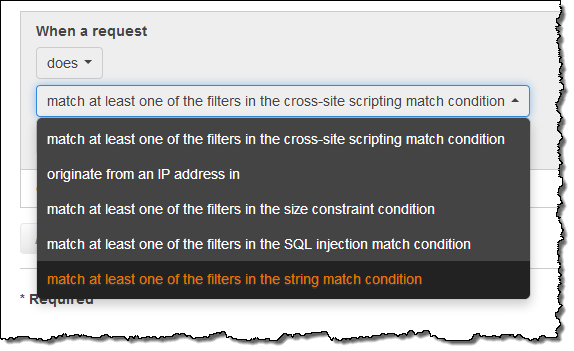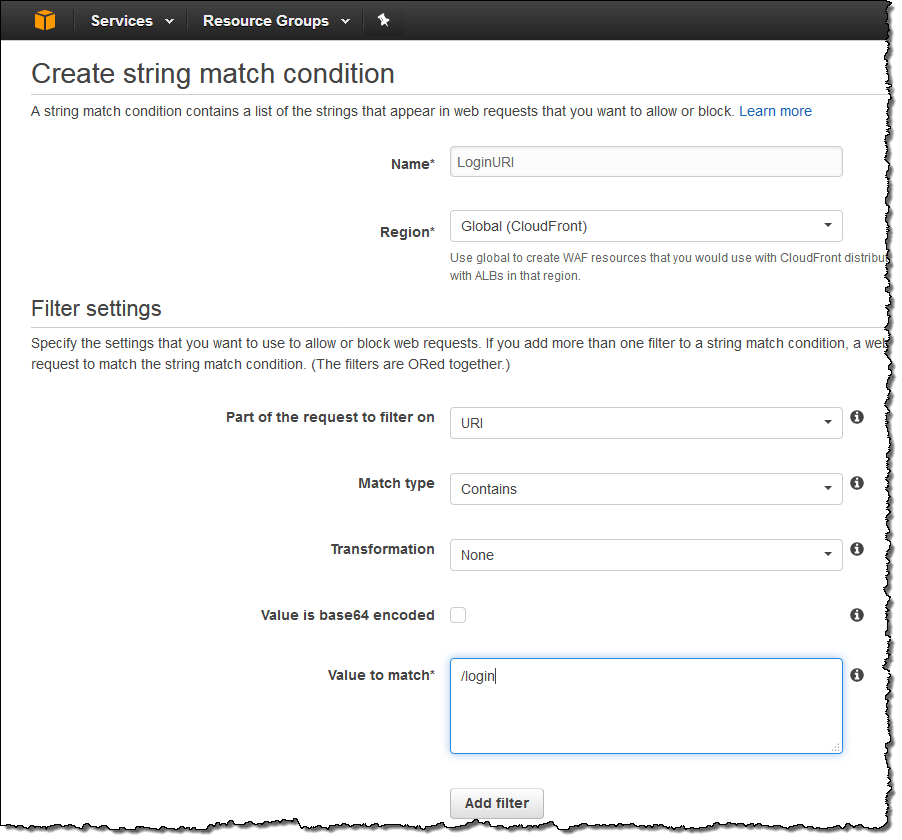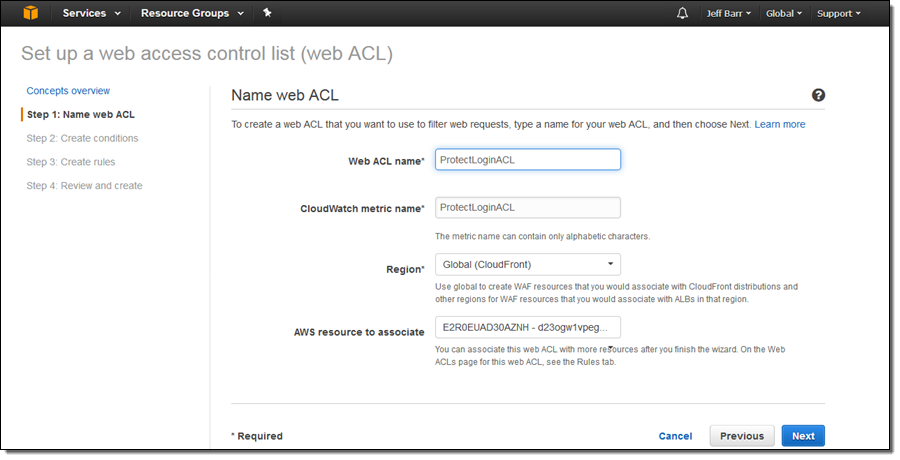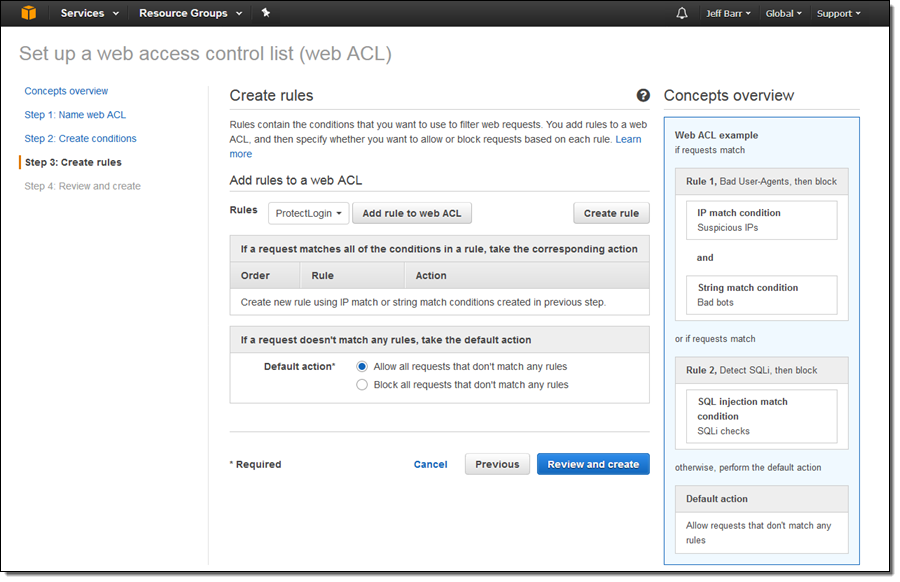AWS News Blog
Protect Web Sites & Services Using Rate-Based Rules for AWS WAF
AWS WAF (Web Application Firewall) helps to protect your application from many different types of application-layer attacks that involve requests that are malicious or malformed. As I showed you when I first wrote about this service (New – AWS WAF), you can define rules that match cross-site scripting, IP address, SQL injection, size, or content constraints:

When incoming requests match rules, actions are invoked. Actions can either allow, block, or simply count matches.
The existing rule model is powerful and gives you the ability to detect and respond to many different types of attacks. It does not, however, allow you to respond to attacks that simply consist of a large number of otherwise valid requests from a particular IP address. These requests might be a web-layer DDoS attack, a brute-force login attempt, or even a partner integration gone awry.
New Rate-Based Rules
Today we are adding Rate-based Rules to WAF, giving you control of when IP addresses are added to and removed from a blacklist, along with the flexibility to handle exceptions and special cases:
Blacklisting IP Addresses – You can blacklist IP addresses that make requests at a rate that exceeds a configured threshold rate.
IP Address Tracking– You can see which IP addresses are currently blacklisted.
IP Address Removal – IP addresses that have been blacklisted are automatically removed when they no longer make requests at a rate above the configured threshold.
IP Address Exemption – You can exempt certain IP addresses from blacklisting by using an IP address whitelist inside of the a rate-based rule. For example, you might want to allow trusted partners to access your site at a higher rate.
Monitoring & Alarming – You can watch and alarm on CloudWatch metrics that are published for each rule.
You can combine new Rate-based Rules with WAF Conditions to implement sophisticated rate-limiting strategies. For example, you could use a Rate-based Rule and a WAF Condition that matches your login pages. This would allow you to impose a modest threshold on your login pages (to avoid brute-force password attacks) and allow a more generous one on your marketing or system status pages.
Thresholds are defined in terms of the number of incoming requests from a single IP address within a 5 minute period. Once this threshold is breached, additional requests from the IP address are blocked until the request rate falls below the threshold.
Using Rate-Based Rules
Here’s how you would define a Rate-based Rule that protects the /login portion of your site. Start by defining a WAF condition that matches the desired string in the URI of the page:

Then use this condition to define a Rate-based Rule (the rate limit is expressed in terms of requests within a 5 minute interval, but the blacklisting goes in to effect as soon as the limit is breached):

With the condition and the rule in place, create a Web ACL (ProtectLoginACL) to bring it all together and to attach it to the AWS resource (a CloudFront distribution in this case):

Then attach the rule (ProtectLogin) to the Web ACL:

The resource is now protected in accord with the rule and the web ACL. You can monitor the associated CloudWatch metrics (ProtectLogin and ProtectLoginACL in this case). You could even create CloudWatch Alarms and use them to fire Lambda functions when a protection threshold is breached. The code could examine the offending IP address and make a complex, business-driven decision, perhaps adding a whitelisting rule that gives an extra-generous allowance to a trusted partner or to a user with a special payment plan.
Available Now
The new, Rate-based Rules are available now and you can start using them today! Rate-based rules are priced the same as Regular rules; see the WAF Pricing page for more info.
— Jeff;